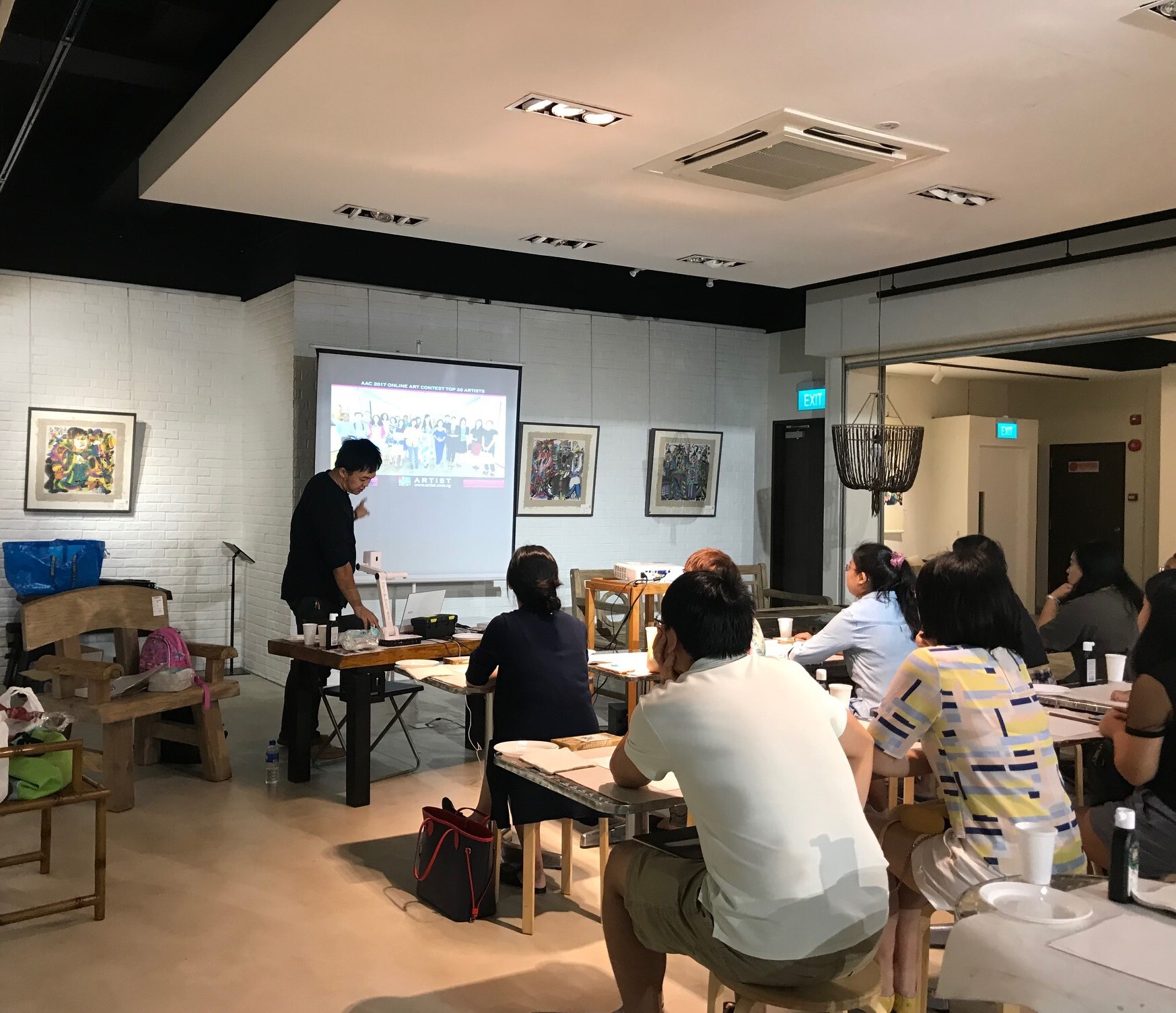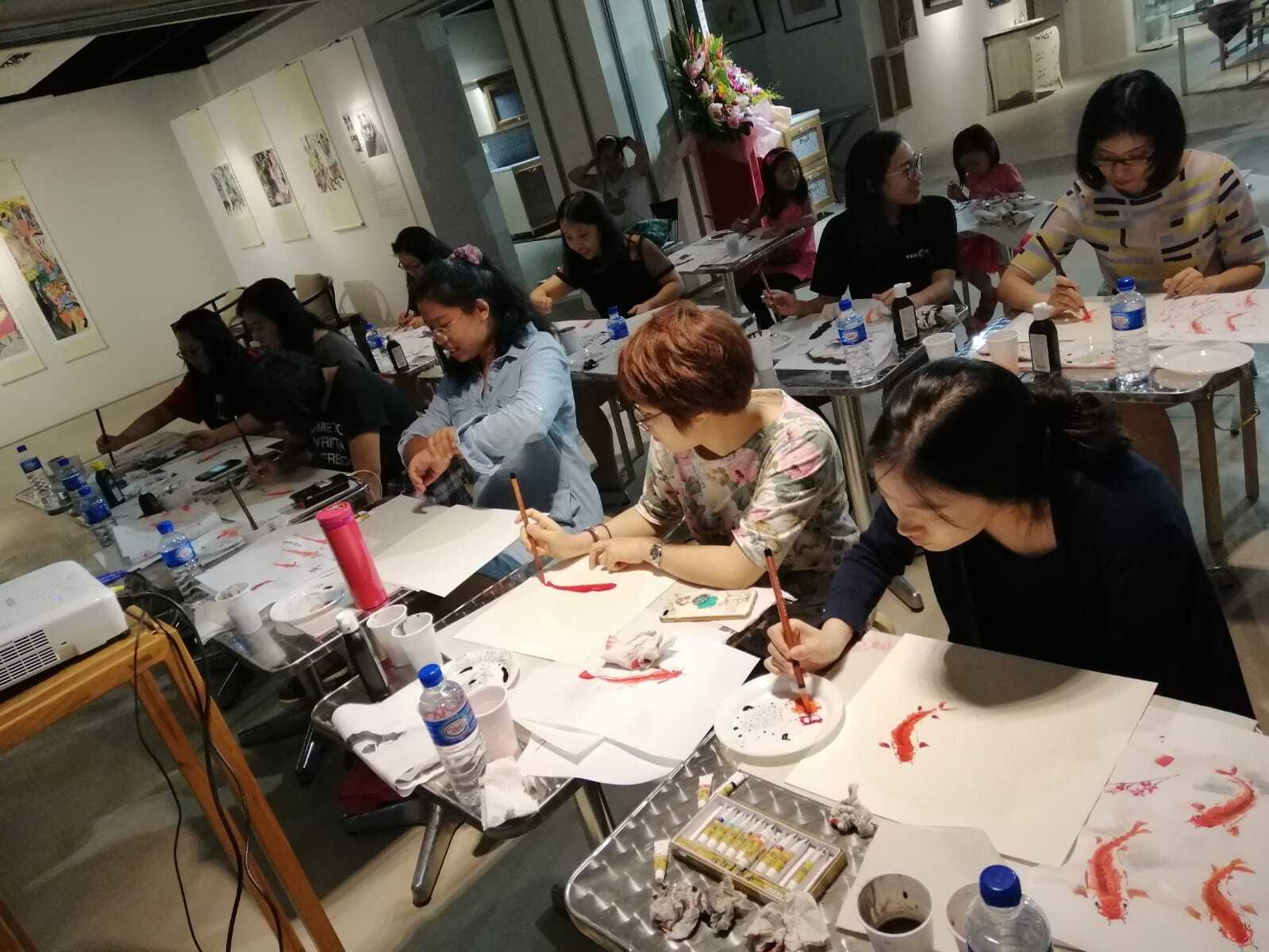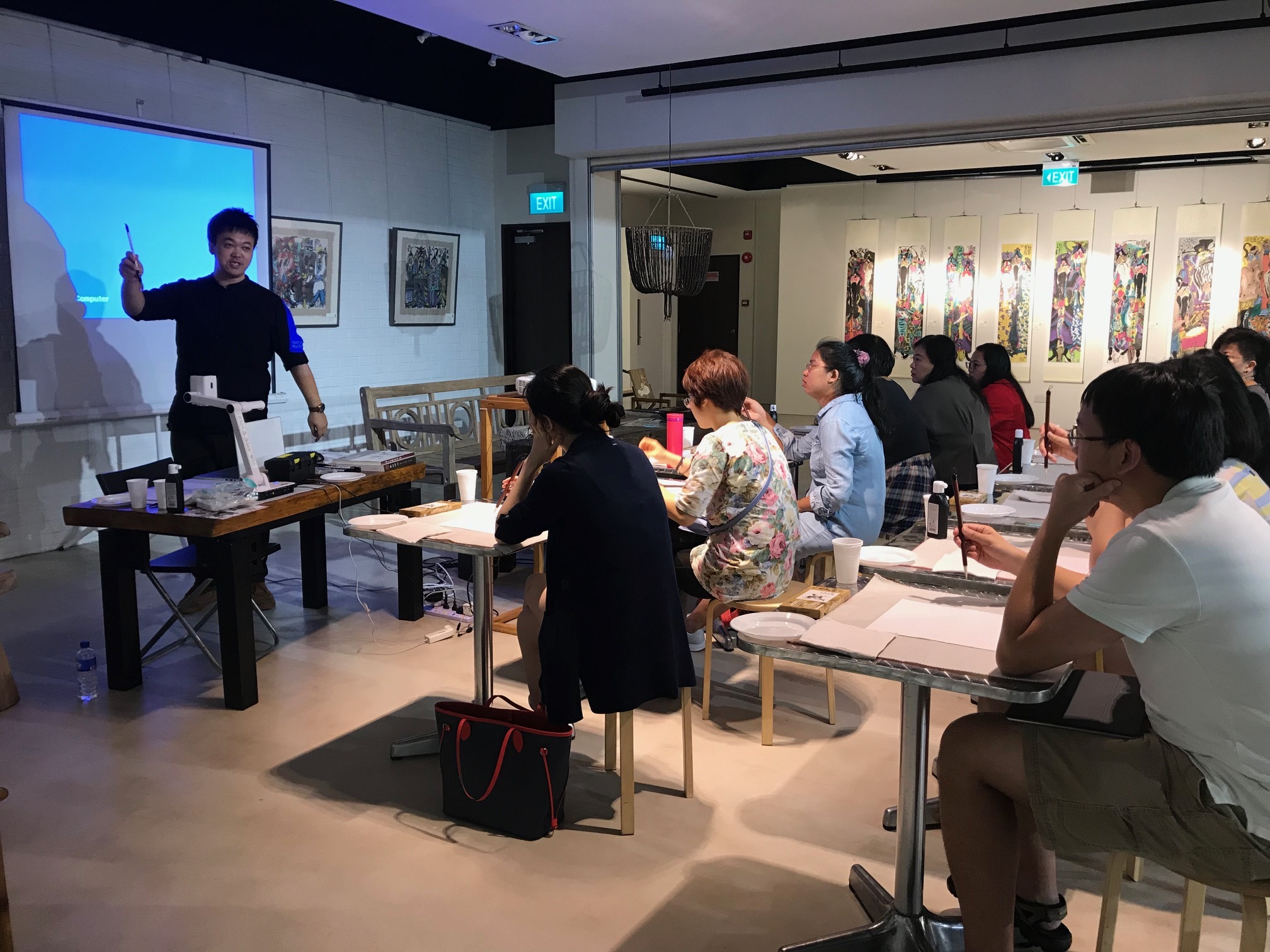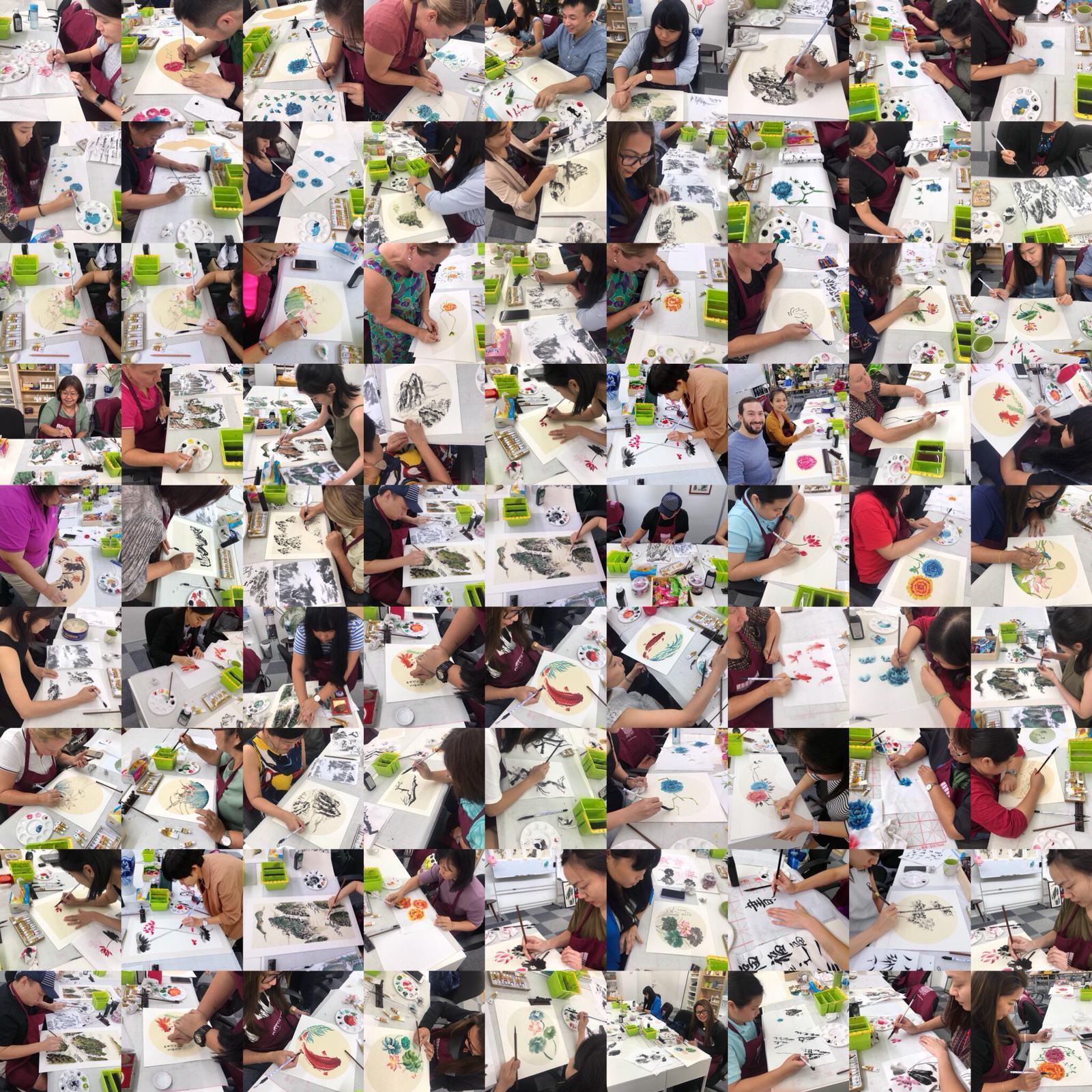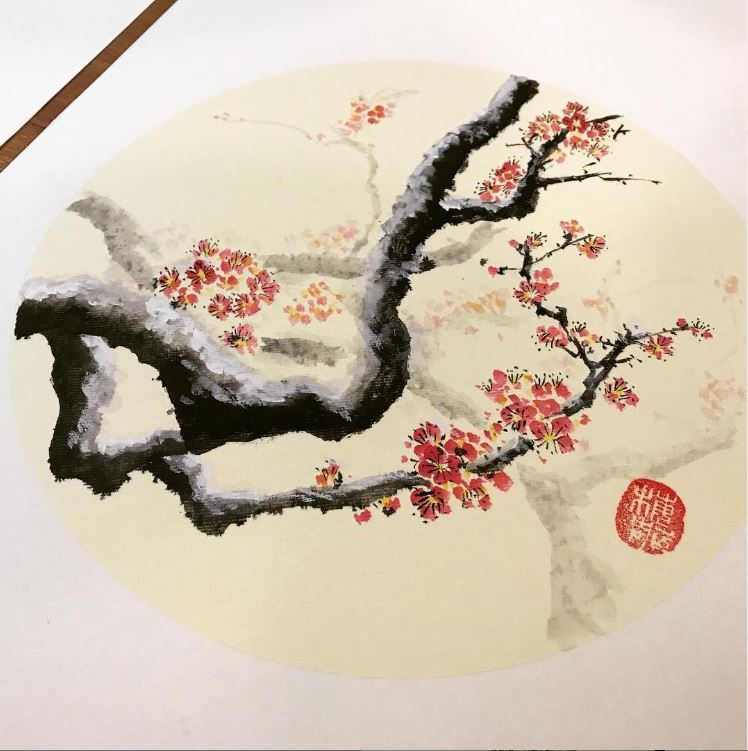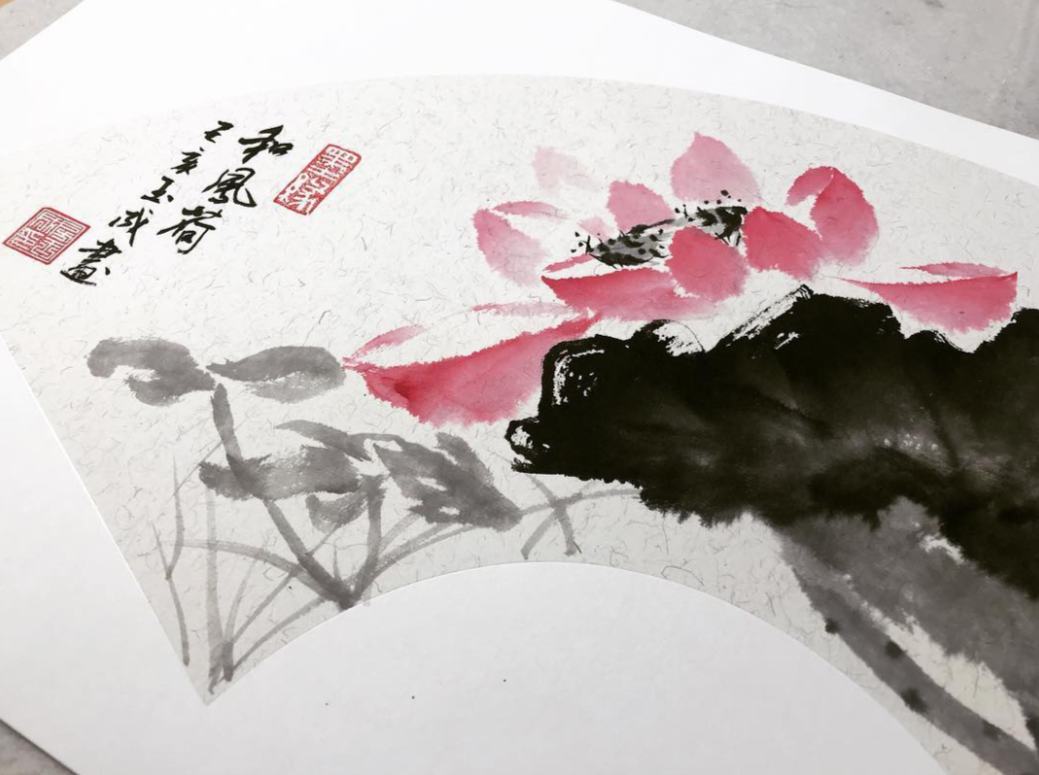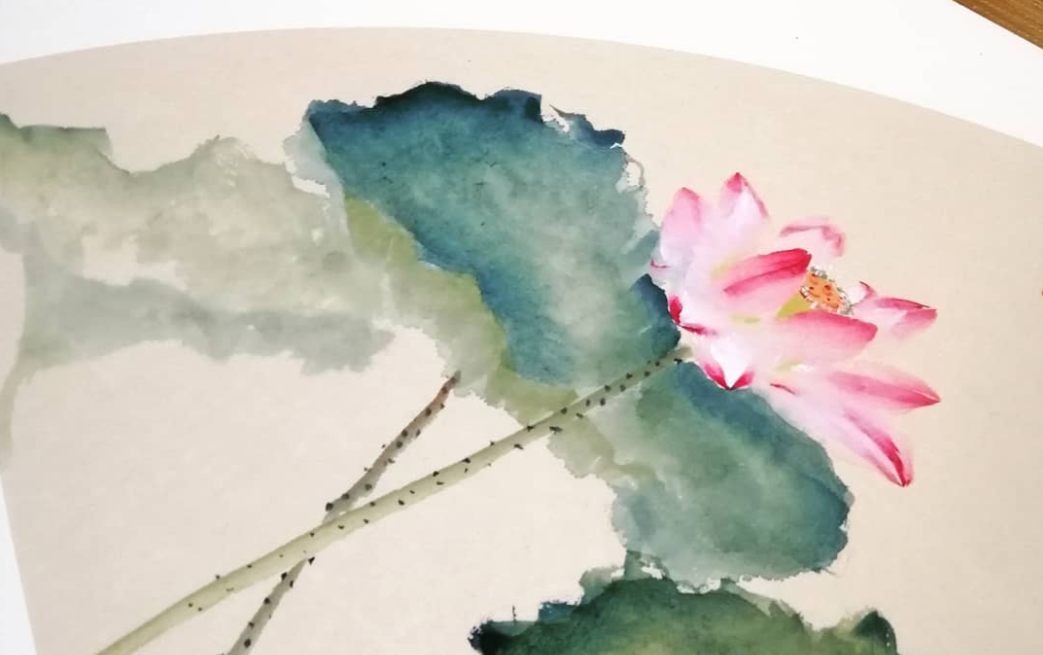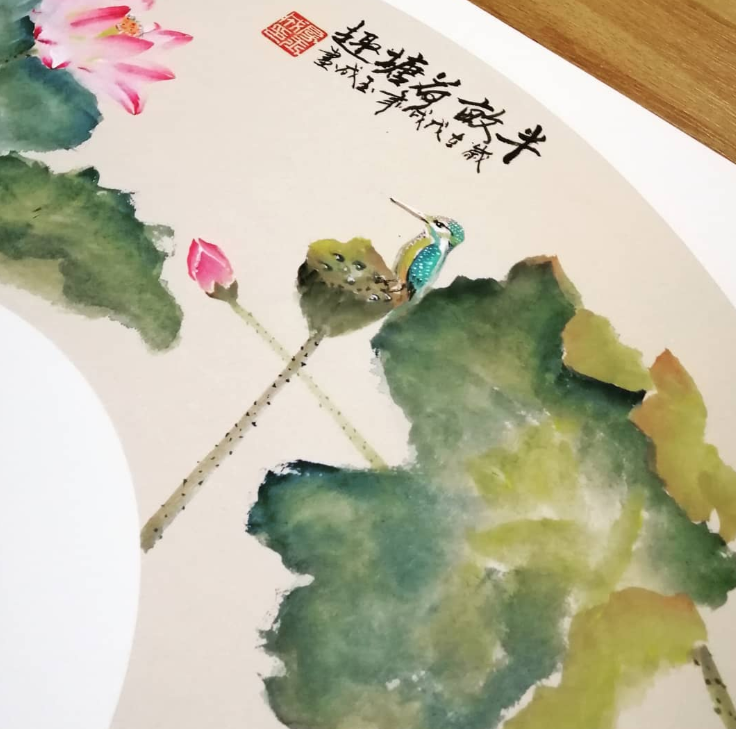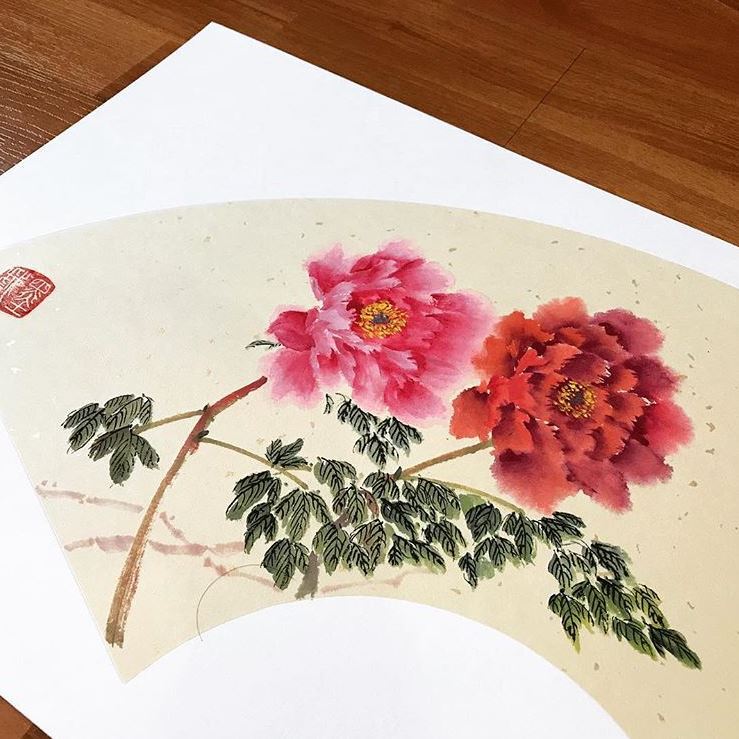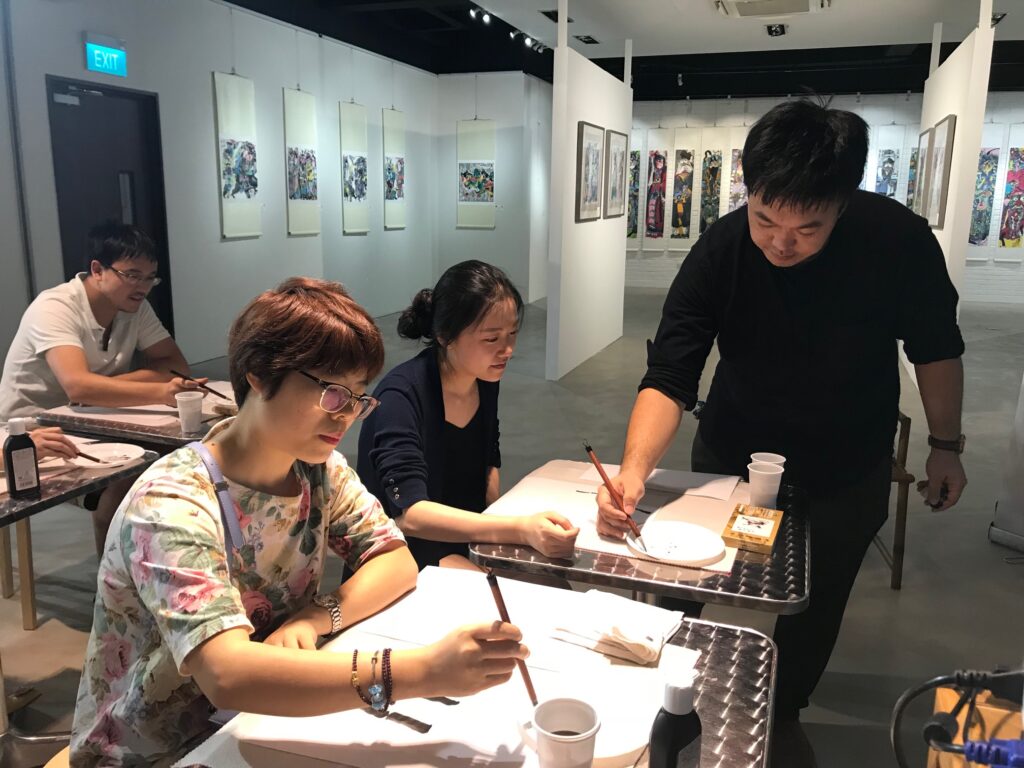Steven Fang Yucheng 房玉成 inherited the art gene from his father, who loves painting and playing violin, “I started to paint everywhere I could when I was about 2 years old, initially this causes a lot problems, because we rent a house at the time, and I started to paint on the walls, not only our room, also landlord’s house walls with anything that could make a color… but gradually my parents found that I wasn’t drawing randomly…” Steven said.
I enjoy painting cos with pencil and brushes I could create a better and beautiful world and everyone needs something positive in their life, paintings could be one solution!
ARTSG: When did you start to learn Chinese Painting?
STEVEN: I started to learn Chinese Ink painting when I was 9 years old, till today it has been around 30 years.
ARTSG: How do you choose the subject of your painting?
STEVEN: My early days of painting follows the traditional Chinese painting topics, which is also what I’m teaching now, and for new creations, my inspiration comes from traveling and experiencing new cultures and new scenery. Whatever stands out from the norm and isn’t something I would see every day.
I think the most important question I have to answer is: Is this interesting?
First it has to interest and inspire me, then I am compelled to create something with quality and mystery that translates my inspiration to the viewer. My subjects have to have longevity in their presentation. I want to present the figures, still lifes, and landscapes I paint as timeless and something special.
ARTSG: What do you believe is the key element in creating a good Chinese painting?
STEVEN: The Chinese painting, especially Xie Yi, the style that requires the painter not only understand what the tools (Chinese brush) could do, also the culture behind, is a very important style that beginners should follow a correct way to learn how to paint, a good Chinese painting does not need to go abstract to the level that people don’t understand, a good Chinese painting to me is it could describe the subjects with the uniquiness of the Ink and Chinese brush, the stroke, the contrast, the meaning and the most important, the space for viewers to imagine.
ARTSG: What is the worst thing you’ve seen someone do to an Chinese painting?
STEVEN: One of the most common things I’ve seen with people unfamiliar to Chinese painting is over working on the painting.
ARTSG: What do you believe is a key element in creating a good composition?
STEVEN: Technically speaking, a good composition in Chinese painting can be learned systmatically, it includes a variety of shapes that are arranged in a dynamic manner. I have a very longstanding series of paintings of birds, and when I am arranging a composition of birds I think about qualities I want to convey in the composition. Qualities such as a sense of light, atmosphere, and movement are key elements in my compositions.
